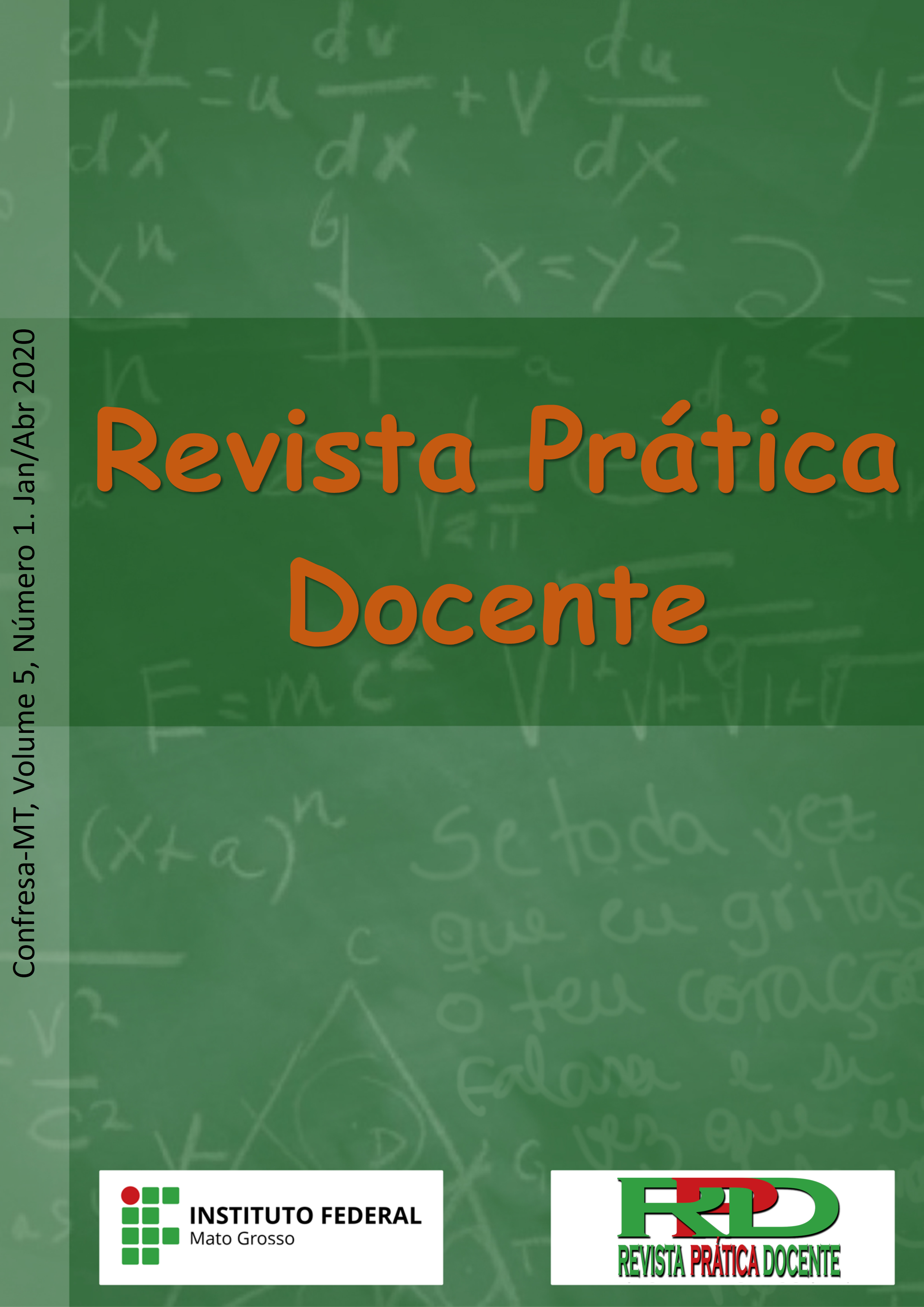FINANCIAL EDUCATION: LEARNING GEOMETRIC PROGRESSION APPLIED TO COMPOUND INTEREST IN THE PERSPECTIVE OF CRITICAL MATHEMATICAL EDUCATION
DOI:
10.23926/RPD.2526-2149.2020.v5.n1.p45-64.id607Keywords:
Critical Mathematics Education, Financial education, Geometric progressionsAbstract
This article is an excerpt of a master's thesis in Mathematics Education. The problem arises from the analysis of two trends that we tried to articulate, on the one hand, the data indicate possible flaws in the learning of mathematics and on the other, the indicators above 60% of household indebtedness. The main objective is to analyze the development of the content of compound interest based on a teaching sequence, based on the study of Geometric Progressions (PG) from the Financial Education movement. The theoretical framework articulates the ideas of Skovsmose, referring to Critical Mathematical Education (EMC), which emphasizes the learning of mathematics in a political and conscious way. The study was applied to students of the 1st year of high school, from a school in the western region of Bahia, Brazil, in July 2018, with the application of a teaching sequence. The methodology is based on research of an empirical nature, exploratory and explanatory. The analyzes were organized into three categories, dealing with the concept of money, understanding of PA and PG and advertisements. The conclusions show the need to expand the work, seeking to contemplate all elements belonging to Financial Mathematics, so that they are treated critically.
Downloads
Metrics
References
BAUMAN, Zygmunt. Vida para o Consumo: a transformação das pessoas em mercadoria. Rio de Janeiro: Zahar, 2008.
BRASIL. PCN + ENSINO MÉDIO: orientações educacionais complementares aos parâmetros curriculares nacionais – ciências da natureza matemática e suas tecnologias. Brasília: Ministério da Educação (MEC), 2007. Disponível: http://portal.mec.gov.br/seb/arquivos/pdf/CienciasNatureza.pdf. Acesso em 13 de outubro de 2017.
BRASIL. Estratégia Nacional de Educação Financeira (ENEF). Decreto 7397 de 22 de Dezembro de 2010. Disponível em: http://www.planalto.gov.br/ccivil_03/_ato2007-2010/2010/decreto/d7397.htm. Acesso em: 13 de outubro de 2017.
BRASIL. Banco Central do Brasil (BCB). Caderno de Educação Financeira – Gestão de Finanças Pessoais. Brasília: BCB, 2013. Disponível em: https://www.bcb.gov.br/content/cidadaniafinanceira/documentos_cidadania/Cuidando_do_seu_dinheiro_Gestao_de_Financas_Pessoais/caderno_cidadania_financeira.pdf. Acesso em 15 de dezembro de 2017.
BRASIL. Base Nacional Comum Curricular (BNCC). Brasília: Ministério da Educação (MEC), 2018. Disponível em: http://basenacionalcomum.mec.gov.br/images/historico/BNCC_EnsinoMedio_embaixa_site_110518.pdf. Acesso em: 10 de junho de 2019.
BRASÍLIA. Cartilha de educação financeira para pais. Edições Câmara. 2011. – (Série ações de cidadania: n. 12).
BRAZIL. Implementing the National Strategy, IN: Advancing National Strategies for Financial Education A Joint Publication by Russia’s G20 Presidency and the OECD. Disponível em: www.vidaedinheiro.gov.br. 2013. Acesso em: 20 de novembro de 2017.
COOK, Daniel Thomas. Beyond Either/or. Journal of Consumer Culture. p.147-153, 2004. Disponível em: https://doi.org/10.1177/1469540504043678. Acesso em agosto de 2018. DOI: https://doi.org/10.1177/1469540504043678
IEZZI, Gelson; HAZZAN, Samuel. Fundamentos de matemática elementar, 4: sequências, matrizes, determinantes, sistemas: 43 exercícios resolvidos, 407 exercícios propostos com resposta, 302 testes de vestibulares com resposta. 2ª ed, São Paulo: Atual, 1977.
IEZZI, Gelson; HAZZAN, Samuel. Fundamentos de matemática elementar, 4: sequências, matrizes, determinantes, sistemas: 43 exercícios resolvidos, 407 exercícios propostos com resposta, 302 testes de vestibulares com resposta. 7ª ed. São Paulo: Atual. 2004.
LIMA, Elon Lages; CARVALHO, Paulo Cezar Pinto; WAGNER, Eduardo; MORGADO, Augusto César. A Matemática do Ensino Médio. 6° ed, Sociedade Brasileira de Matemática, Vol 2. 2006. (Coleção do Professor de Matemática).
PICCINI, Abelardo de Lima. Matemática Financeira: objetiva e aplicada. 9° ed, São Paulo: Elsevier, 2011.
GODOY, Elenilton Vieira. Currículo, cultura e educação matemática: Uma aproximação possível. Campinas, SP: Papirus, 2015.
RIO DE JANEIRO. Secretaria de Estado de Ciência, Tecnologia e Inovação. Matemática e suas tecnologias: utilizando porcentagens. Fascículo 6, unidade 18, rev, FUNDAÇÃO CECIERJ, CEJA Centro de Educação de Jovens e Adultos, Rio de Janeiro, 2016.
SARAIVA, Karla Schuck. Os sujeitos endividados e a Educação Financeira. Educar em Revista, Curitiba, v. 33, n. 66, p. 157-173, 2017. DOI: https://doi.org/10.1590/0104-4060.53867
SKOVSMOSE, Ole. Cenários para investigação. In: Bolema, nº 14, 2000.
SKOVSMOSE, Ole. Educação Matemática Crítica: a questão da democracia. Campinas, SP: Papirus, 2001.
SKOVSMOSE, Ole. Um convite a Educação Matemática Crítica. Tradução: Orlando Andrade Figueiredo. Campinas, SP: Papirus, 2014.
Downloads
Published
How to Cite
Issue
Section
License
Copyright (c) 2023 A Revista Prática Docente tem o direito de primeira publicação

This work is licensed under a Creative Commons Attribution-NonCommercial 4.0 International License.
Authors who publish in this journal agree to the following terms:
- Authors retain the copyright and grant the journal the right of first publication, with the paper simultaneously licensed under the Licença Creative Commons Attribution allows the sharing of the work with acknowledgment of authorship and initial publication in this journal.
- Authors are authorized to take additional contracts separately, for non-exclusive distribution of the version of the work published in this journal (e.g. publish in institutional repository or as a book chapter), with acknowledgment of authorship and initial publication in this journal.











